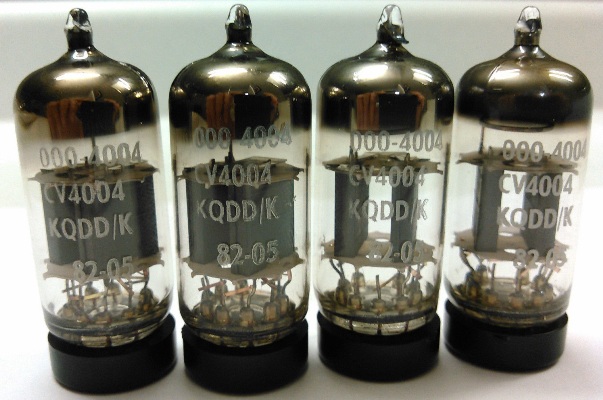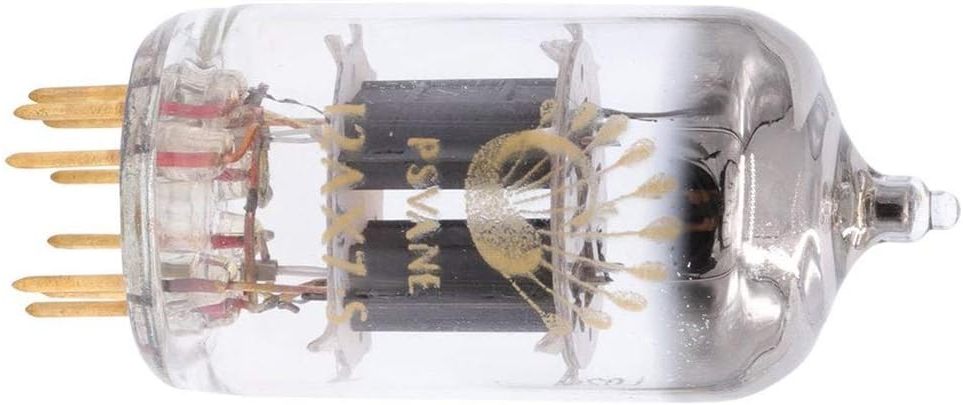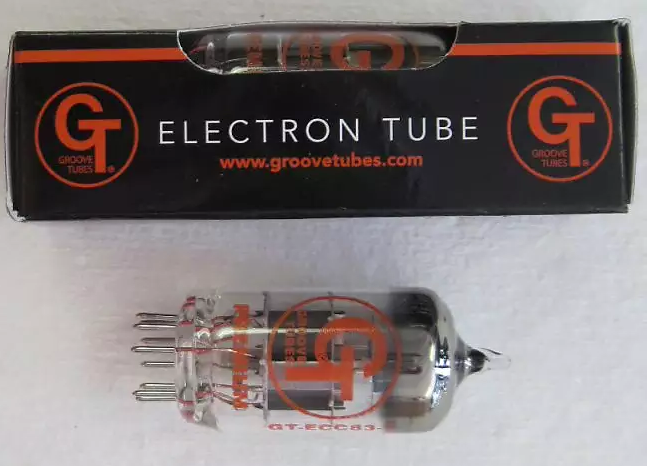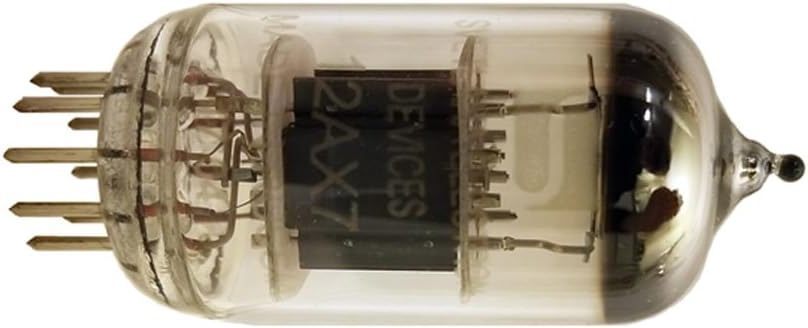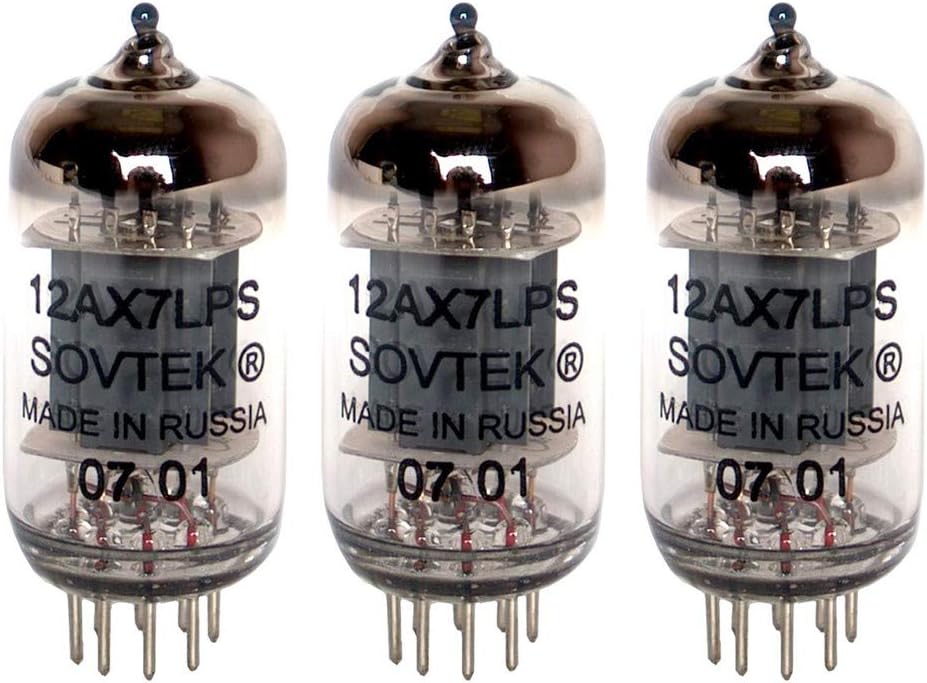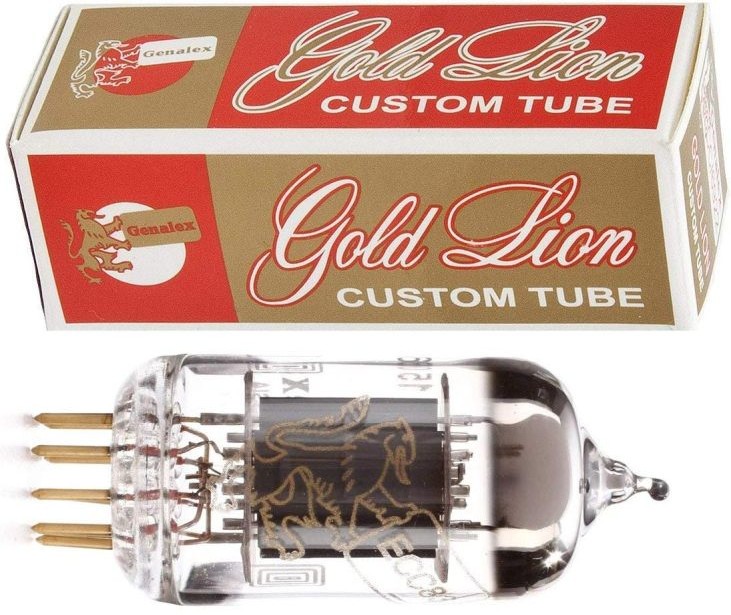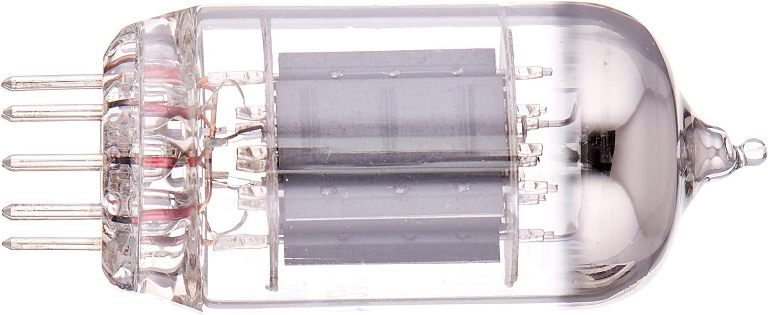A 12AX7 is likely to be found under your tube-based guitar, bass amplifier, or Hi-fi amplifier. You might even find a few. Because of its high gain, and low noise characteristics, the 12AX7 tube amplifier is the best choice. What are the best 12AX7 tubes?
Even though they are very popular, most people don’t know much about them. It can be nerve-racking to even change one. This ultimate guide will change everything! This article should be saved so that you can refer to it again when you have questions about the 12AX7.
Each 12AX7 is unique and has its own strengths and weaknesses. Some sound darker than others. Some sound louder than others. We have created the following comparison chart with reviews of what each tube brand brings to the table.
Top 12AX7 Tubs Amplifier Review
These tubes are among the most popular 12AX7/ECC83 tubes available, and they are also affordable and easy-to-find. We’ve created recommendations for instrument amplifiers as well as HIFI applications.
Below are the main characteristics that we chose to rate: microphonics and noise. These are the main features we believe you should expect from a 12AX7. We have given each tube an rating for its strengths and flaws.
- Microphonic Rating (1 being very low, 5 being very high)
- Noise Rating: 1 is very quiet, 5 is very loud.
- Frequency Response 1 being very dull, 10 being rich and vibrant
- We also tested a variety of amplifiers that could play different types of music.
- Revv Generator Mk2 High Gain and Clean Tones
- Vox AC30 Crunch Tones
- Marshall JCM 800 Vintage Crunch and Clean Tones
- Mesa Boogie Prodigy Bass Amp
- BoyuuRange Reisong A12-Hi-Fi Amplifier
1. PSVANE 12AX7-S
The PSVANE 12AX7-S is an amazing tube for musical instruments and HIFI Applications. This version has a full body, deep bass and pristine highs. Compared to others, it has a noticeable high-end performance. The Psvane performed better, is richer, thicker, and more complex.
For musical instrument amplifiers, this tube was very well-balanced. The low end is present, but not overly muddy. When saturated, it was thick and fast enough to fill the room in a pleasing way. The top end was not overly aggressive, but rounded and musical.
If you are running any type of HI-FI equipment that is medium grade quality or higher, you will enjoy these tubes. The experience in both music and movies is well worth the money. They are also very quiet. We recommend the PSVANE 12AX7-S for all applications.
2. JJ ECC83S
The JJ ECC83S is a very popular 12AX7 among guitar players and musicians. This tube is well-balanced and is relatively low in noise. JJ has become a very popular and well known brand over the last few decades, making durable tubes with good longevity. They are capable of taking a beating, standing up to aggressive touring and gigging.
This model is warmer sounding than other 12AX7 and is great if you are looking for a darker tone. If you have a harsh or bright sound, this version will tame that harshness. The low microphonics of this tube and good gain structure make this a great choice for guitar amps in the more aggressive realms.
The JJ 12AX7/ECC83S tube is recommended for high gain amplifiers that are focused on warmer rhythm aggressive sounds and music like:
- Metal
- Hard rock
- Rock
- Bass Amps
But they are also capable of delivering superb clean sounds and can work for blues, jazz and classic rock tones. For bass amps, this is also a great choice as they pack a punch.
This JJ ECC83S will work better in instrument amplifiers and is not recommended for HI-FI applications.
3. Groove Tube ECCC83
The Groove Tube 12AX7 is a Fender branded model, and it sings. This one has a stronger output, putting more bite into your high gain tones. Its ability to add beef to a saturated tone is over the top. This is the type that opens up your sound by providing a great presence across all frequencies.
Clean sounds were very rich and chimes providing a nice experience over all. The crunch tones were full of life and very detailed. Compared to other tubes, this one felt a bit more aggressive. The build quality is great, but because of the added aggression, there was a bit more noise compared to other tubes. A couple of the ones we tried had a slight ring to them when saturated, but nothing crazy.
Analog, more advanced
This tube has that Marshall bite yet has a full-bodied mid-range and solid low end. Perfect for both rhythm and leads. Because of the full spectrum of sounds, bass amps will come to life with this model as well.
This is great 12AX7 for:
- Metal
- Hard Rock
- Grunge
- Medium gain
- Clean tones
We recommend the Groove Tube 12AX7C for instrument amplifiers. There are better choices for HI-FI.
4. JJ ECC803
The JJ ECC803/12AX7 is a long plate tube based loosely around the ECC83S. We wanted to include this model in our list because it is quite different from the 83S, especially in the high-end response, which had a bit to do with the gold pins. The low end and mid-range are also different. It is very full and almost sounds like a blanket was removed from a speaker.
As we played it more, over time it seemed to continue to get sweeter. It is a great tube and is well-balanced and musical. Any amplifier can benefit from this one, and it will fit many forms of music. Clean tones were exceptional and vibrant. Being as full as it was, we also found the bass amp to respond well to this tube as well.
One thing with long plates is they are known to be a bit noisier, but we didn’t experience that with this model. It was quiet and did not present any microphonic issues.
Unlike the 83S, we found this to be a better candidate for HI-FI audio as well and would compliment a great system. This JJ ECC803S will work great in all types of instrument amplifiers as well as HiFi applications.
5. Svetlana 12AX7
The Svetlana 12AX7 is a Russian made tube designed after a New Old Stock favorite. This model is well received by those who like the old RCA’s because of its smoother frequency output. It has a great bass response, being quite full in the lows but not over bearing. The mid-range is smooth and very present, which was perfect for lower gain crunch tones.
The top end was open without being too bright. This tube is not harsh and doesn’t have the same gain output as some of our more metal friendly selections. But this makes it perfect for lower gain tones and bass amps. Upon saturation, the structure was not overly gritty or grainy, which was a very articulate and musical experience.
For HI-FI, this tube is a real gem as well. It is well-balanced, refined and less bright than some other models, making it great for this application. It is well worth a try and very affordable.
We suggest this tube type for:
- Rock
- Classic rock
- Country
- Jazz
- Blues
- Bass Amps
- HiFi Amplifiers
The Svetlana 12AX7 is great choice for instrument amplifiers and HIFI applications.
6. Tung-Sol 12AX7
The Tung-Sol version is another popular model. This tube is very musical and rich in harmonics. The highs are smooth rather than harsh yet pronounced. Tung-sol, which is now owned by Electro-Harmonix, is well received in the amp world because of the durable and very musical products they make. These tubes are trusted and relied on by many musicians, from hobby to pro.
This model has the ability to tame high-end harshness, but isn’t dark or muddy. Good sounding with great drive. Its bright and sparkly sound is perfect for not only clean tones, but is good for searing leads. The low microphonics and robust build make them an amazing choice for many types of music. They work great in any position in your amp because of their low noise.
The Tungsol 12AX7 is a well rounded tube and we recommend it for:
- High gain Rhythm
- Leads
- Clean tones
- Bass Amps
They will fit any form of music very well because of their clarity and well rounded sounds. While we would recommend the Tung-sol more for instrument amplifiers, they do a decent job in HIFI applications as well.
7. Sovtek 12AX7LPS
Another awesome Russian made tube made to breathe life back into the dullest of amplifiers! The Sovtek 12AX7LPS are a great sounding tube with low noise and microphonics. Its break up character is very pleasing, with chewy crunch tones rich with articulate harmonics.
High gain tones were quite good with well-balanced sound and response. They lean towards the warmer side of the spectrum, but the highs were still present and clear. Being a long plate, I sort of expected more noise from the tube, but was pleasantly surprised at how quiet it was.
For HI-FI applications, this was a great fit, very smooth and full, no odd noises or funny response. Bass amplifiers will benefit from this model because of its warmer mid-range punch.
The type of music i would suggest for this tube type:
- Rock
- Classic
- Jazz
- Country
- Bass amps
The Sovtek 12AX7LPS is good choice for both instrument amplifiers and HIFI applications.
8. Genalex 12AX7
The Genalex Gold Lion 12AX7 is smooth and is an incredible tube to increase the performance and definition of your amplifier. This tube has a very broad mid-range that is pleasing to the ear, but isn’t boxy or flat. The detail in note response is rich, tight and articulate, which everything you could need or want.
The highs and lows are well-balanced, giving this tube a very full dynamic sound. This is considered the best 12AX7 in production and the change is noticeable! And thanks to the great build quality, the noise is super low and there were no microphonic feedback issues present. This model can be used in any position or stage of your amplifier.
The triodes inside this envelope are also balanced to within 15% of each other, so they also make a great phase inverter or buffer tube. Effect loops will also benefit from this one.
The Genelex Gold Lion is the perfect tube for:
- Rhythm
- Leads
- Clean tones
- Bass Amps
- Hi-Fi Amplifiers
We recommend the Genalex Gold Lion for both instrument amplifiers as well as HIFI applications.
9. Electro-Harmonix 12AX7
The Electro-Harmonix 12AX7EH is another great choice and one that doesn’t get the recognition it deserves. This tube is one that you will find comes stock in a lot of amplifiers. This is because of its great build quality and full-bodied sound. Not only that, but you can also find them in a lot of guitar pedals, as they work so well in many applications.
The lack of noise and microphonics was appreciated, especially when upgrading from lower quality tubes. The articulation in this model was frequency wide, as it kept itself together real well overall. The bass was rounded but not mushy, and the top end response was right on point. It was neither sharp nor dull and was pleasing to the ear.
This is a great tube for:
- Metal
- Rock
- Classic
- Blues
- Jazz
- Bass amps
- Hi-Fi Amplifiers
The Electro Harmonix 12AX7 is great in both instrument amplifiers and HIFI applications.
10. Mullard 12AX7
The Mullard 12AX7 has a long history and has earned a reputation in the NOS hall of fame. Today, the reissue is just as good and a perfect tube for clean or vintage sounds. Because it has a more gritty sound to it when driven into saturation, it serves a better role in the crunch tones. Depending on your amplifier, it may serve well in the high gain arena, but we found it favored classic stuff more.
It has a very warm tone and crisp top end, perfect for low gain feel and leads. When you dig in, the response if everything you could ask for. Good build quality helps keep noise and microphonics very low, making it a nice tube for any position in your amp.
Bass amplifiers will make great use of this tube, as it provides a well-balanced sound with a deep low end. And because it is so well-rounded, it also works like a champ in HI-FI applications as well.
It will serve very well in genres like:
- Blues
- Jazz
- Classic Rock
- Vintage sounds
- Bass amps
- Hi-Fi Amplifiers
We recommend the Mullard 12AX7 for low gain tones, bass amplifiers and HIFI applications.
How to Choose the Right one 12AX7 Tubes
The 12AX7 is a very popular amp, so you will likely find one or more in your amplifier. They can be found in HI-FI, guitar and bass amplifiers. They can even be found in pedals that make use of them for their amazing tone. How do you find the perfect sound for your rig and guitar?
It can be difficult to choose between the many types of products we have listed, along with their strengths or weaknesses.
It is a good idea to read through our reviews and choose the one that suits your musical tastes. You might be able to mix and match amplifiers with high-gain models.
Some tubes work better in circuits that produce crunch sounds. You might consider a few of the models that are good at this task.
You can’t go wrong if you match the sound you want to your tube. These models are among the most advanced available. We have chosen to review them and include them in our list. Many of these models are affordable so you can easily try them all and discover their amazing sounds for yourself.
Best 12AX7 Tube for Metal
You will need to have a variety of high gain tones if you are a heavy metal player. Some tubes are better suited for metal music than others. The wrong tube could make your music darker.
These are the best 12AX7 metal tubes currently in production:
- JJECC83S – This tube is great for those who like a deeper rhythm sound. These tubes are brighter than bright, and more aggressive than they look.
- JJECC803S – This is a more balanced version of the JJ sound. This version retains the excellent low end, but adds some sparkle to your sound. They can cover almost all metal genres and are very aggressive.
- Genalex12AX7 – This preamp tube is a great choice for heavy metal. It has a balanced sound and a great mid-range punch. This tone is perfect for high gain and can be used in all guitar amps.
- Electro Harmonix 12AX7 – The EH version is balanced but not as bright. It’s not as dark as the JJ stuff but it is fairly neutral in the top end. This sound can be great for most metal musicians.
- Groove Tube ECC83 – This tube is quite aggressive and articulate. This tube’s brightness is the reason. It is great for creating searing lead tones and has a strong low-end response.
There are many options depending on the type of sound you require. These tubes are described in detail in our comments at the end of this article. We will go over them all and discuss what they offer.
Best 12AX7 Tube for Bass Preamps
Although guitar and bass players may have different preferences in terms of sound, there are many options that can satisfy both. While most tubes will produce a great bass sound with minimal effort, there are some that can do the job better.
Because of its dark nature, the JJ ECC83S tube is great. It is an excellent option for bass sound and is very affordable. Another tube worth considering is the Sovtek 12AX7. Because of its performance, it is a brand that many manufacturers include in their bass gear.
The Mullard 12AX7 bass amp tube is also an excellent choice. It can enhance your sound with its great features. All of these options depend on the type of bass tone that you want, so experimentation is a good idea.
12AX7 Tubs in Rock History
You may think of Marshall and Fender when you think about amplifiers that powered the music scene in the past.
These amplifiers are great, but what about that tube? The 12AX7 tube has been used since the 1950s by amplifier makers!
These tiny tubes were the driving force behind rock and roll’s sound since the very beginning. It is often forgotten about, even though the 12AX7 amplifier is very popular today. It is clear and makes music sound great. This amp is a hard worker and deserves credit.
12AX7 Technical Information
12AX7 Specification and Max Ratings
The 12AX7 label is a set of designations that describes the capabilities of the tube and how it should be used. It’s more than a model number.
The 12 signifies that the heater will need 12 volts. The “A” sign means it is an amplifier device.
The X represents its electrical characteristics and the 7 the number of active Pins.
- Filament Voltage: 6.3-12 V
- Filament Current: 300-150 mA
- Plate Voltage (max): 330 V
- Plate Current (max): 6 mA
- Max Plate Dissipation: 1.1W
12AX7 Pin Out
- Plate 2
- Grid 2
- Cathode 2
- Filament 2
- Filament 1
- Plate 1
- Grid 1
- Cathode 1
- Shared Filament
Different 12AX7 Names and Labels
12AX7 vs. ECC83
Fear not if you’ve ever opened your amp expecting to find a 12AX7, but instead found ECC83s.
They are identical except for the manufacturer’s name and location. This label was used for this type of product when it was made in North America.
They are not manufactured in North America today, but manufacturers can label them as such upon request. The design is identical.
ECC83 is the European manufacturer’s label, but it is the same tube. If you find an ECC83, it can be replaced with a 12AX7 or vice versa.
These are the same tube types with a different nomenclature. You can use an ECC83 instead of a 12AX7.
7025 Pre-Amp Tube
The name 7025 refers to an improved version of the 12AX7 that was introduced in the 1960s. The upgraded version was more quiet and robust than the standard model at that time.
They were more microphonic and a better product all round. A few years later the 12AX7 was made in the same way as the 7025. This new design was standard and made the tube more durable.
Some manufacturers claim that they still make the 7025 with stronger metals. These are slightly more expensive than the 12AX7, but they are much quieter. These quieter versions can only be used as the first stage of a preamp.
The noise floor at the input tube is extremely low so it’s important to be as quiet as possible.
5751 Pre-Amp Tube
As a military specification, the 12AX7 version 5751 was developed. This tube received extra support internal and featured matched triode sections.
A 5751 also produces less gain than the 12AX7. The gain factor for a standard model is 100, while the 5751 has 70.
The 5751 is sometimes called a 12AT7 by some because it has the same gain factor as the 12AX7, which has 70. This is incorrect as the plate resistance for a 5751 will be the same as that of a 12AX7. A 5751 can be used in its place. However, it will not produce as much gain.
This tube is ideal for controlling amplifiers with excessive gain.
This tube can be used in place of the phase converter to draw less power from an amplifier.
12AX7 “A” and “B”
Two tubes, the 12AX7A-A and “B”, are nearly identical in almost every way.
These two labels may have been found in your hunting and you were curious to know the difference.
They come in the same tubes and are made in the same batches, but some of them produce high gains.
The 12AX7A-A has a higher gain than its counterpart. The “B” version of the 12AX7-A is a screened tube that has been selected for its high gain, low noise and excellent performance.
TwelveAX7A-A was the name given to those with higher gain and less noise.
Peavey and Mesa Boogie use 12AX7A-A labelled versions due to the higher gain but sometimes with a louder output.
The 12AX7A-A is the best amplifier for you if you don’t mind noise and want to be a gain machine.
The “B” version has the best gain and quieter sound.
Microphonics and Noise
Checking a 12AX7 for Microphonics
Microphonic is a common term among tube amp owners. This term is used to describe problems with amps.
What does this really mean? They are tested for many different things when they are manufactured to ensure they are good tubes.
One of these tests is noises, and more specifically, microphonics.
The microphonic tube amplifies external noise. If tapped on, most microphonic tubes will sound like a bell.
Most will make noise if they are in the input position. It is important to remember that the noise floor will cause it to make a sound when it is tapped on.
The reality is that a tube made of rugged material with low microphonics will make a thud sound. However, it will also ring and produce high-frequency noises.
A word of caution: When you tap on a tube for verification, be careful not to tap too hard. The tube is an electronic, mechanical device and can be damaged by being hit too hard.
Are Microphonic Tubes a Problem
Tubes today aren’t what they were in the past.
Some manufacturers may not perform all necessary tests in some cases. Amplifier builders perform most tests to eliminate poor amplifiers.
Sometimes, very small quantities of microphonic tubes may make it to amplifier manufacturers. However, this does not necessarily mean they are all unacceptable.
Some microphonic tubes may outlast others. All are imperfect, so it is impossible to create a perfect one.
You must avoid using above-average microphonic types in areas with low noise floors.
You don’t want it to be noisy at the input of a preamp or tube-driven effects loop.
These positions have a very low noise floor, so the “ringing” sound of a tube can be quite noticeable.
It is always best to place a microphonic tube where signal levels are already amplified and larger.
However, some are more than others so it is important to remember that.
It is best to not use the tube if it is too unstable. It will be fine if it has a little ring but is stable.
Tube Dampers for Microphonics
These products are available on the market. To prevent the microphonic person from ringing, you can place tube dampers on the outside.
Dampers can be used to reduce mechanical noises from louder units. Aramox is a great damper and can be used with any tube to stop any noises.
Are you tired of hearing noises? You might be able to solve your problems with their dampers.
Understanding 12AX7 Tube Noise
Now that we’ve touched on microphonics it’s time to discuss tube noise.
An amplifier that is designed to play high-gain guitars or Hi-fi stereo systems will produce noises, hum, and pop, which can be annoying.
All types of tubes have a noise floor. This is not to be avoided. A tube will typically produce a soft hiss, or white noise. This is what it is commonly referred to as. This is normal, and it will vary between tubes as different tubes produce different amounts.
White noise is more common in amplifiers with high gain.
These amplifiers have multiple triode stages connected in series. Each stage amplifies the white noise from the input stage, making it much more visible.
The input or first stage should always have the quietest tube. Mesa Boogie, an amplifier company, takes the time to identify the most quiet within each batch.
The tubes are then sold for the input stage or first stage of high-gain amplifiers. These tubes are better suited for high gain players who prefer to use them at lower levels.
They produce less white noise, and they are ideal for the first stage of all amplifiers.
Crackles and Pops
What kind of noise should a tube make before it needs to be replaced? It is time to replace your 12AX7 if it starts making crackles or pops.
If the tubes are brand new and you place them in, they will crackle. This is normal and it’s usually just the tube heating up and removing any impurities.
To allow the amp to settle, we recommend you leave it on for at least a few hours. These sounds may continue for several days, indicating that the tube is not working properly.
If your amp has been in use for years and is making loud noises, it may be time to replace it.
Vacuum Tube Pin Straightener
Preamp tube pins may sometimes become bent from time to time. If the pins are not properly straightened, this can cause serious damage. You don’t want to end up with a cracked tube after you have spent a lot of money on it.
It will be more difficult to insert tubes into sockets if the pins are bent or bent. As well as causing socket damage, this can also cause sockets to wear.
Riverstone Audio has a fantastic stainless steel straightening device for 12AX7’s that every tube owner should have. These tools are much more affordable than needle nose pliers and offer a better alternative.
FAQ for Best 12AX7 Tube
What is the 12AX7 Tubes?
The 12AX7 dual triode is a 9-pin, 9-pin triode. It has two sides or amplifiers within one tube or glass envelope. It is a small signal amplifier with high gain. It can amplify a small input signal to a great extent.
This is particularly useful in amplifiers for instrument signals, as they are very low. Normaly, in the millivolt range. Each triode, or amplifier within the tube has 3 pins that control the amplifier as well as a shared heater element.
The heater element stimulates electrons within and produces a faint orange glow. The 12AX7 is one of many twin triode vacuum tubes that have their own unique characteristics. You can choose from a variety of voltage gains, durability, microphonics and stability. They even have a long lifespan. The most popular type is the 12AX7, which is produced more than 2 million each year.
Which 12AX7 tube sounds best?
It all depends on what sound you want. The Genalex Gold Lions can help you open up your sound and give it vibrancy.
These tubes are amazing and can be used in almost any situation. The JJECC83 has a dark sound that can be almost muffled in certain amps.
The Tungsol is the next option if that doesn’t suit you. Although it isn’t as dark, it is still a balanced tube with excellent projection. It is less congested than JJ.
If you are looking for a tube that has great high-gain bite and is affordable, the Shuguang version may be for you.
Overall, the Tungsol is probably the best option for most people. If price is not an issue, the Gold Lions are a good option.
How long do 12AX7 Tubes last?
The 12AX7 is designed to last 10,000 hours before it needs to be replaced.
Tubes are not like light bulbs, and they can stop working at any time. Even below the 10,000-hour mark.
The 12AX7 electromechanical device also includes a heater element. The elements could be displaced if the tube is shocked.
Even the heater element might just go out. There is no guarantee! You may get 10,000 hours from one tube, but only 4 hours from another.
This is how it works with tubes. To make sure that you get quality products, many manufacturers offer great warranties. Always buy from a reputable vendor. We recommend Amazon.
My 12AX7 flashes at start-up?
It is normal for a 12AX7 to flash at startup and not something to be concerned about. This may disappear over time. For the first few start ups, new tubes may do this because there may still be gasses from manufacturing. However, it ceases flashing after several uses.
This is not normal if your power tubes light up when you turn on the amp. This is a sign that your amp needs to be turned off. Flashing can cause serious damage to your amp.
What does the 12AX7 tube consist of?
The 12AX7 is a type of vacuum tube that is used in the amplification of audio signals. It is often used in guitar amplifiers and other audio equipment.
This type of tube has been around for a long time and was first introduced in 1947.
It’s made up of three sections: the cathode, which is heated by an electric current; the grid, which controls the flow of electrons from the cathode to the plate; and finally, the plate, which collects electrons from both the cathode and grid.
How do 12AX7 tube differ from other tubes?
The 12AX7 tube is a high-gain preamplifier tube with a medium-mu triode vacuum tube. It is also known as the ECC83 in Europe and the 12AU7 in Britain. The 12AX7 is used extensively in audio equipment, such as guitar amplifiers, hi-fi amplifiers, and recording studios.
The 12AX7 is used for its low noise, wide frequency response range, and high voltage gain. The tube has an amplification factor of 100 (20 dB). This means that when the input signal voltage equals 1 millivolt (mV), the output signal voltage equals 100 mV.
The 12AX7 has a higher gain than other tubes because of its medium-mu triode vacuum tube design. The mu of a vacuum tube indicates how much current it requires to produce a given amount of voltage at an input terminal – the lower the mu, the higher the gain.
What are 12AX7 tube of using benefits and drawbacks?
The 12AX7 tube is a vacuum tube that can be used in audio equipment, including amplifiers, radios and television sets. They are typically used as voltage amplifiers or voltage regulators.
The 12AX7 is an excellent option for guitar amps because it has a higher gain than other types of tubes, like the 6L6. This makes it a good choice if you want to have more distortion in your sound.
However, the 12AX7 does not work well as a voltage regulator because it has a very high output impedance – so it can’t regulate the voltage as well as other types of tubes.
What are the different types of 12AX7 tubes?
There are many different types of 12AX7 tubes, but they are all variations on the same theme. These variations are made by slight changes in the design, such as how the tube is constructed and its power ratings.
- The 12AX7 is a type of vacuum tube that was first manufactured in 1948 by General Electric. It has been used by guitarists since then because it has a high input impedance and low noise level.
- The 12AX7A is an improved version of the 12AX7 with a higher voltage rating for use in amateur radio equipment.
- The 12AU7 is another variation on this tube that has a higher sensitivity for use in TV sets and radios.
What are the risks of using 12AX7 tubes?
Some people may not be aware of the risks of using 12AX7 tubes – that they are potentially putting themselves at risk for exposure to radiation.
The risk is that these tubes are made from a radioactive material, which is called thorium. It can be found in the glass and metal components of the tube, and it can also be found in the vacuum inside the tube. This means that a person could be exposed to radiation when they use one of these tubes, or when they work on it.
How do I use 12AX7 tubes?
The most common use for 12AX7 vacuum tubes is as an amplifier for low-level signals. These signals include microphones and electric guitars. They are also commonly used to amplify the signal from the record player’s pick-up cartridge to drive speakers or headphones with lower impedance ratings than the source’s output impedance.
Will my guitar sound better with 12AX7 tubes?
The 12AX7 tube’s construction consists of an octal base with three pins, and it has a maximum operating voltage of 250 volts.
The 12AX7 can be used in two different ways: to amplify the signal or to act as a preamplifier for the signal. These two uses are determined by which pins are connected to the circuit.
If you want your guitar to sound better, then you should buy 12AX7 tubes because they will make your guitar sound clearer and more crisp while also giving it more power.
When should I replace the 12AX7 tube?
Replacing the old 12AX7 tube with a new one is necessary if you hear extraneous sounds, such as buzzing or buzzing.
How do I replace a 12AX7 tube?
In order to replace a 12AX7 tube, you will need to remove the old one and the use a screwdriver to unscrew the old tube. You will then need to insert the new 12AX7 tube and use your fingers to screw it in place.
